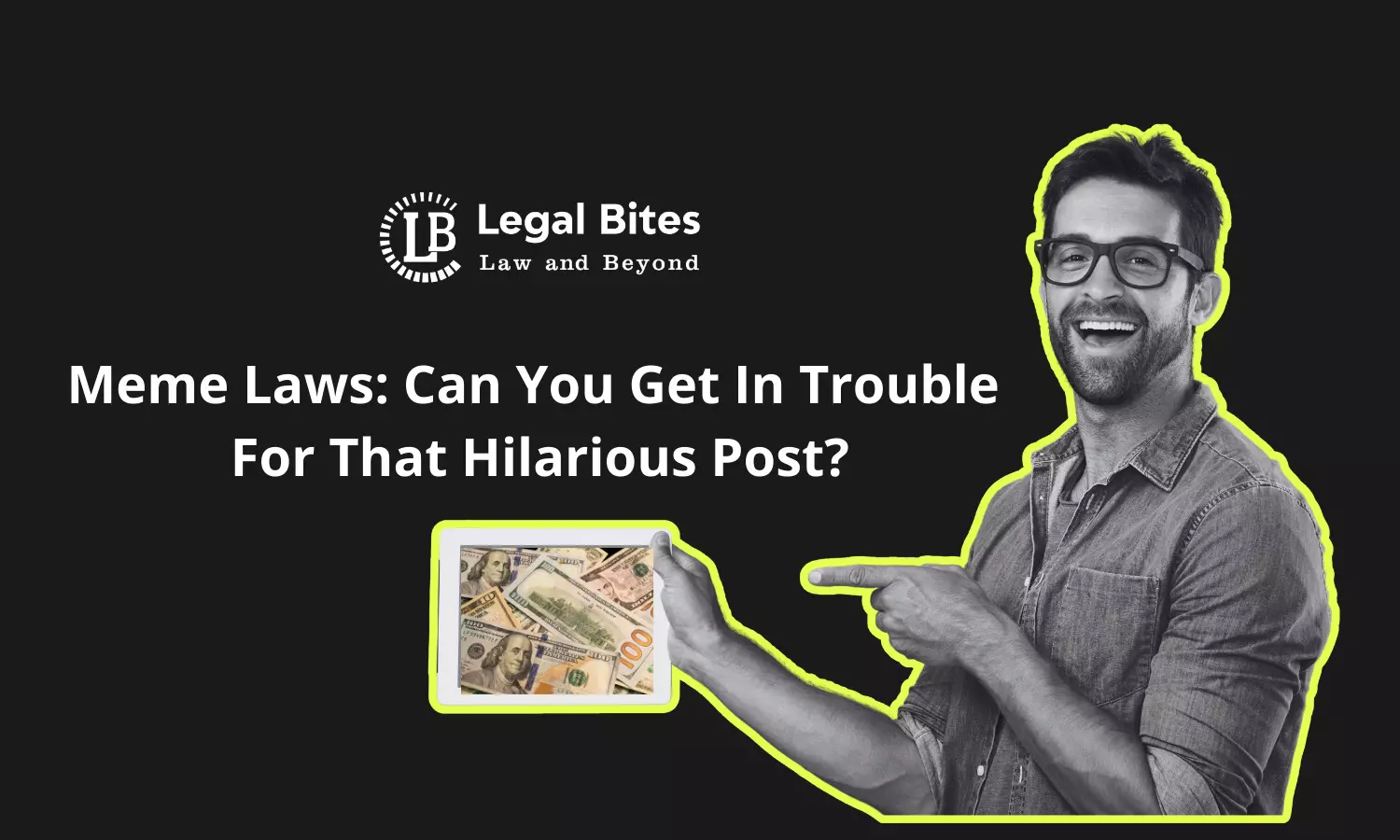Meme Laws: Can You Get In Trouble For That Hilarious Post?
This article on meme laws explores the legal boundaries and potential consequences of sharing or creating memes online.

Posting memes can potentially infringe on copyright laws, violate privacy rights, or lead to accusations of defamation. Navigating these legal nuances is essential for users to enjoy memes responsibly and avoid legal consequences.
Introduction
Socializing over the internet has become prominent for a quite long now, and the concept of "meme culture" has evolved into a source of enjoyment for every generation around. The humorous content, along with graphics, text captions, images, or movie clips, of 'memes presents a funny aspect throughout all the social media platforms.
Meme producers can be hobbyists, freelance artists, or anyone else like us, ordinary people. Memes frequently serve as parodies of already legally protected content, which means they use preexisting intellectual work as an example or blueprint to create new content. As a result, it has become vital to determine if these ostensibly joyous memes breach the intellectual property rights of the actual copyrighted material.
Do memes steal copyrights?
A "meme" is an artefact that combines imaginative expression and perception. As such, it satisfies the description of 'artistic works' within the Indian Copyright Act of 1957. In addition, the principal material utilized as an umbrella or basis for creating a meme is a copyrighted work rather than the creator's own. Whenever a photograph or a video clip is released without the owner's or content creator's permission, it is considered an infringement of copyright or breach, and is defined as 'infringing copy'.
For example, the pictures featured in Game of Thrones parodies are owned by the program's creators. The law governing copyright safeguards not only the moving image but all aspects of the work, which include still pictures as well.
Section 14(d) of the Indian Copyright Act permits the creation of a replica of a movie, comprising a picture of any image that is a part of it. It implies that the production of a meme must be established by prior authorization of the individual who possesses the copyright of that content.
Though this would imply that memes were produced from a copyrighted work and so infringe on it, the University of London Press v. University of Tutorial Press, [1916] 2 Ch 601, decision ruled that the work must be the author's creation. It is crucial to have original expression rather than unique ideas.
This method is based on the concept that any new expression derived from an original work of art should not be duplicated. This principle is also adopted in India.
The primary purpose is to identify whether a meme has been significantly altered from the original copyrighted work or whether it adds a new expression to the source material. If viewers or readers believe that a meme is just a copycat of the original content, whatever the meme's final output is, it will infringe on the copyrighted work. Even though a meme can only be created using original copyrighted content as a model or guidelines, it is regarded as an infringement if it contains considerable duplication.
A meme may be developed merely for fun and not traded in any way. In such cases, the Indian Copyright Act offers copyright defence using a 'fair use' defence.
What is the Defence of “Fair Use”?
The components featured within the meme are subordinate to the creator's wit or innovative thoughts, and the copyrighted piece may call into question the authenticity of the violation. In such cases, the legal principle of fair use might be used. Since memes are frequently made for enjoyment rather than financial gain, Section 52(1)(a) of the Copyright Act 1957 establishes the concept of equitable handling to help meme makers avoid violation fines and unnecessary penalties.
Defence of “Fair Use” under the Copyrights Act 1957
There are two factors to identify if the use of copyrighted content is “Fair” or not:
- The first thing is to identify whether the copyrighted content is commercial. Usually, memes are made for entertainment and fun purposes and there is no scope or intent of gaining any financial gain from it. However, if the memes are made from a copyrighted work without the permission of its owner and with an intent to generate financial gain or any kind of revenue then in such cases, the memer cannot take protection under the defence of “Fair Use.” And this shall be held as commercial exploitation.
- Fair use factors are determined by the number as well as the significance of copied content used. An isolated joke or still picture from a greater work (TV program, film) may be acceptable under the fair use defence. However, copying the totality of a short-copyrighted work, such as an image or artwork, is less likely to be deemed fair use.
- Merely reposting a meme on social media platforms will also be considered as a defence under “fair use”
The courts in India have frequently ruled that making memes does not give immunity to the memer against the law and legal penalties. It is a well-known principle that making reels is restricted to the extent that it does not conflict with some other person's rights.
For example: In a recent judgement which involved a meme against a famous politician Ms. Mamta Banerjee wherein her image was morphed and posted all around social media platforms, which further led to defamation of the politician.
In this scenario, the accused was ordered to apologise to the Supreme Court even though the accused just “reposted” the meme and did not “create” the meme. Further, the meme was stopped from being shared on social media platforms.
Nevertheless, to safeguard a person's rights in cases of defamation, some nations have passed strict regulations. To protect this, India implemented the "Information Technology (Intermediary Guidelines and Digital Media Ethics Code) Rules, 2021," which enables intermediaries such as Facebook and Instagram to restrict accessibility to any illegal data within 36 hours of receiving a directive from a court or a government agency.
The owners of copyrighted information can make complaints against users who produce memes for profit purposes; nevertheless, the complexities of the problem will continue to be discussed given that there have been no previous verdicts on this issue before the Indian Judiciary and this is still a grey area.
Conclusion
Considering the online social networking sphere, it is critical to grasp the intellectual property responsibility of these memes. A meme is built on previously published copyrighted information. As a result, it comes under the definition of infringement within copyright rules.
The fair use defence is plausible when considering the actual circumstances and legitimacy of the memes. The fair use principle will not protect a meme against violation if it is exploited for financial gain or to endanger a person. Despite most people who spread parodies on the internet do not do it for earnings this does not excuse them from breaking the copyright indicated in the memes.
While copyrighted material owners pursue claims against persons who create memes for entertainment reasons, they may choose not to do so in most cases, as initiating violation action against people would be ineffective and time-consuming. Since there are no precedents in Indian courts on this matter, the intricacies of the problem will continue to be debated.
References
[1] The Information Technology (Intermediary Guidelines and Digital Media Ethics Code Rules) 2021, Available Here
[2] Indian Copyright Act 1957, Available Here
[3] The Dangers of Controlling Memes through Copyright Law, Available Here
Important Links
Law Library: Notes and Study Material for LLB, LLM, Judiciary, and Entrance Exams

